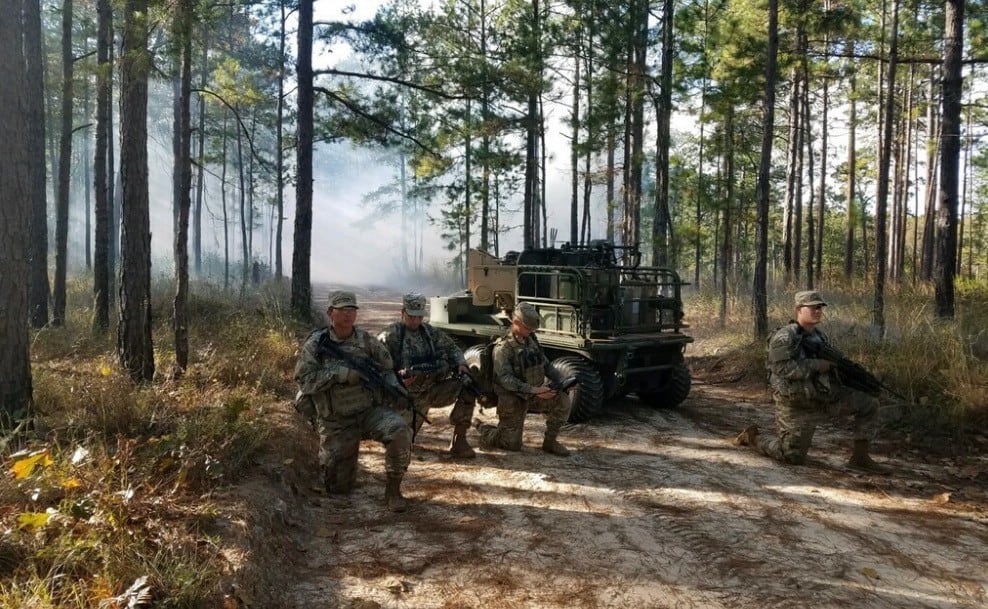Ongoing tests of the Army’s Robotic Combat Vehicle this year will expand the vision of what the service wants to do with its vehicle and even dismounted formations.
This past fall, the Army announced that it will pursue light, medium and heavy versions of the RCV. The light version’s fielding could be as early as 2023 with the medium and heavy versions to follow one year after the other.
Early experiments in 2018 and 2019 focused on soldiers controlling the vehicle from a near but remote location for maneuvers and even complex operations such as breaching. Those evolved from single-vehicle “robot wingman” style tests to platoon-sized efforts and are expected to see company-sized attempts soon.
RELATED

In November, soldiers with A Company, 1st Battalion of the 28th Infantry took four light versions of the RCV along on dismounted, rifle platoon exercises at Fort Benning, Georgia.
Those included movement to contact, attacks and defense. They did side-by-side comparisons, running the drills without robots in standard formations and again with the robots.
They also had a few more tools to use alongside the RCVs — including a tethered drone, counter-drone jammer, smoke obscuration module and a Common Remotely Operated Weapon System with both an M240 machine gun and Javelin missile.
The RCV got a taste of amphibious operations, too, when it “swam” across Victory Pond at Fort Benning to test its abilities in water crossings.
Soldier feedback on maneuverability and capability were positive, but it did have trouble keeping up with dismounted soldiers in dense vegetation, according to the Army.
These vehicles are seen as more than just gear mules and potential extended fires for the platoon-size force.
Brig. Gen. Ross Coffman, who directs the Army’s Next Generation Combat Vehicle Cross Functional Team, also said that exercises such as the November rifle company maneuvers will help inform Army formations and employment.
That’s because the service is looking at how to best restructure their basic fighting unit – the Brigade Combat Team – as they gear up for division-level and Corps-level combat.
Paradoxically, that might mean a lighter but more mobile and faster infantry footprint.
The Army shifted some of its infantry BCTs to Stryker BCTs starting in 2018 and continued that move by bulking up its formations, transforming some Stryker teams to Armor brigades.
What that means is that IBCTs, or their eventual replacement, will have to keep up with more mechanized and mobile options with more vehicles and likely more robots in the ranks.
Todd South has written about crime, courts, government and the military for multiple publications since 2004 and was named a 2014 Pulitzer finalist for a co-written project on witness intimidation. Todd is a Marine veteran of the Iraq War.



